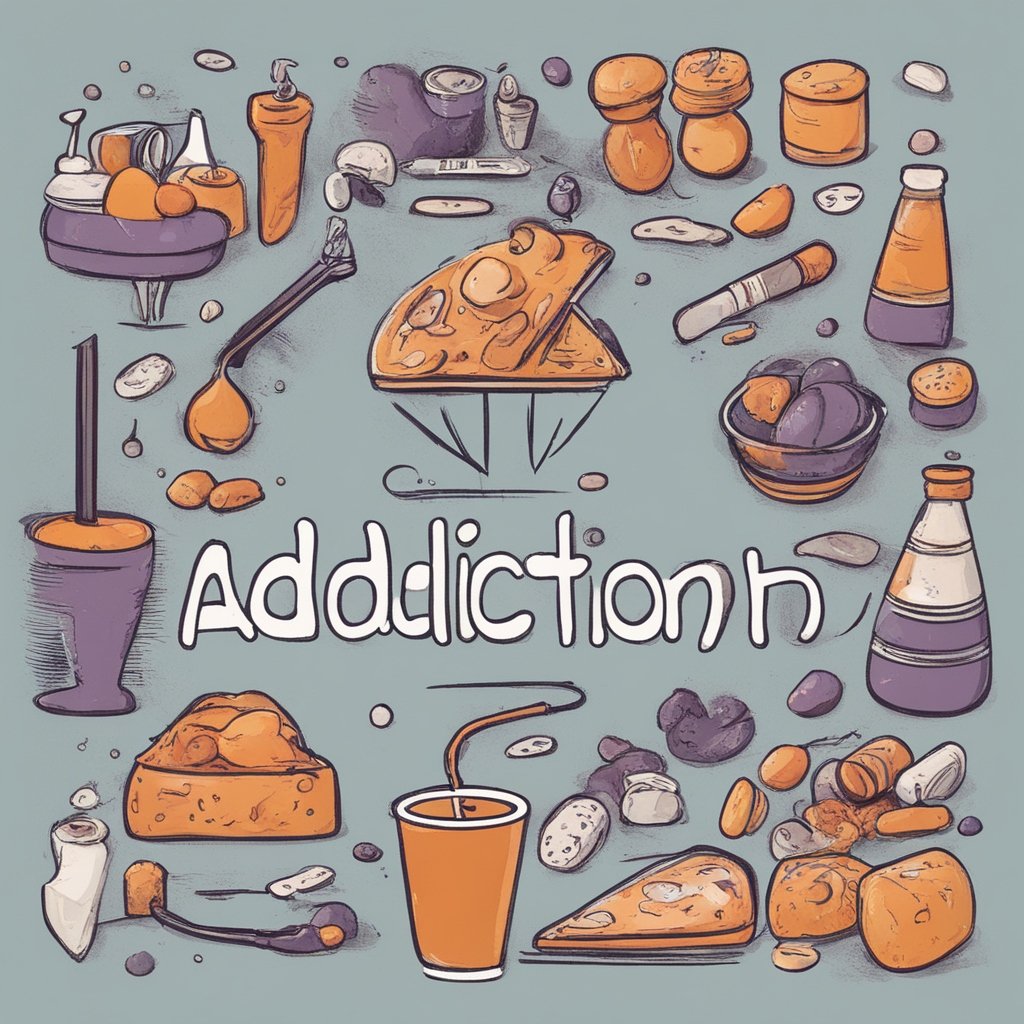The Best Addiction Handbook in Case Book Work Hub
An explanation of addiction How Can Someone Be Addictive?
A strong and unwavering desire to use drugs or partake in activities that provide a natural pleasure is the hallmark of addiction, a neuropsychological condition that can continue despite significant harm and other unfavorable outcomes. Repetitive drug use lowers (but does not totally eliminate) self-control and frequently modifies brain function in ways that prolong yearning. Drugs’ ability to alter brain function has led to a better understanding of addiction as a brain condition, with a wide range of complicated psychosocial and neurobiological (and hence involuntary) elements implicated in the development of addiction.Addiction’s classic symptoms include compulsive participation in rewarding stimuli, obsession with drugs or behavior, and persistence in use despite side effects. Addiction-related behaviors and patterns are frequently typified by instant pleasure (short-term reward).
Alcoholism, cannabis addiction, amphetamine addiction, cocaine addiction, nicotine addiction, opioid addiction, and eating or food addiction are a few examples of drug addictions, or more broadly, substance addictions. An obsession with video games, obsessive-compulsive disorder, gambling, shopping, stalking, internet addiction, social media addiction, and sexual addiction are examples of behavioral addictions. While gaming addictions are also recognized by the ICD-11, they are only recognized as behavioral addictions by the DSM-5 and ICD-10.

Photo by Basil MK
The most perilous aspect of our lives is addiction. It is impossible to say that all addiction is bad; nonetheless, certain addictions cause us to lose our lives.
So let’s talk about addiction and what it is in reality
The terms “addiction” and “addictive behavior” refer to a group of mental illnesses, neuropsychological symptoms, or simply unhealthy/maladaptive behaviors. In the medical field, the term “addiction” is frequently used to describe neuropsychological symptoms that indicate persistent, overwhelming, and strong impulses to engage in a certain category of behavioral compulsions or impulses that lead to sensory rewards (such as alcohol, betel quid, narcotics, sex, gambling, or video games). Substance-use addictions and behavioral addictions are the two types of additive disorders, also known as addiction disorders, which are mental illnesses characterized by high intensities of addictions (as neuropsychological symptoms) that cause functional disabilities, i.e., restrict subjects’ social/family and occupational activities.
In medicine, there is disagreement on the precise definition of addiction. According to Volkow et al. (2016), addictions are classified as the most severe type of addictive disorders by the DSM-5 because they are characterized by excessive or pervasive substance use or impulsive or compulsional behavior. Many studies and papers in the scientific community adopt this terminology.

Additionally, the polyseme “dependence” might refer to either mental problems or neuropsychological symptoms. According to the DSM-5, substance-use dependences are severe phases of substance-use addictions (i.e., mental disorders) containing withdrawal symptoms. Dependencies are also distinguished from addictions in that they can occur naturally without addictions. “Substance-use addiction” (i.e., neuropsychological symptoms) is synonymous with “substance-use dependence” in the ICD-11. Withdrawal symptoms may or may not be present.
Chronic addiction is a medical condition that can be treated. It is influenced by a person’s experiences in life, genetics, environment, and intricate brain circuits. Addicts take drugs or participate in obsessive behaviors that they frequently maintain in spite of negative outcomes.
Addiction treatment and prevention programs are typically just as effective as those for other chronic illnesses.
Displaying a persistent, compulsive, physiological, or psychological demand for a drug, activity, or behavior that can become a habit. addicted to gambling, alcohol, or drugs. smoking addicts. b.: a strong propensity to engage in, do, or utilize something frequently
Let’s Discuss About Substance Abuse For Book Work
Addiction to Drugs :
Within the category of substance-related disorders, drug addiction is a recurrent, long-term brain disorder characterized by drug usage and seeking, even in the face of negative consequences. This type of addiction alters brain chemistry in a way that compromises the brain’s reward system, which has practical ramifications for stress reduction and self-control. If left untreated, damage to the affected organs’ functions might last a lifetime and result in death. Drug addiction is associated with substances such as alcohol, nicotine, marijuana, amphetamines, cocaine, opiates, and even high-fat and high-sugar diets. Addictions might start out as social experiments or result from using prescription drugs or a range of other interventions.
It has been demonstrated that drug addiction functions in phenomenological, cognitive, operant and classical conditioning, and cue reactivity models. Still, no single model captures substance abuse in all its details.
Among the risk factors for addiction are
 Aggressive conduct, especially as a child
Aggressive conduct, especially as a child- The substance’s accessibility
- Economic standing of the community 4. Experimentation
- Fifth, Epigenetics
- Impulsivity (motor, non-planning, or attentional)
- Absence of parental guidance
- Insufficient ability to refuse to be accepted by peers
- Mental health conditions
- The substance is consumed using the method
- Adolescent substance use
Addiction to Food :
The diagnostic criterion for food or eating addiction is based on subjective experiences akin to drug use disorders, and it has not been classified or specified in sources such as the Diagnostic and Statistical Manual of Mental Disorders (DSM or DSM-5). Although not everyone with eating disorders also has food addiction, not everyone with food addiction has an eating disorder diagnosis. However, there is a possibility that people with eating disorders also have food addiction.

Consuming high-fat, high-salt, or high-sugar meals—like chocolate—frequently over time can lead to an addiction comparable to drug addiction because they activate the brain’s reward system, which makes the person crave the same foods more and more over time. The body’s signals for fullness can be overridden by signals sent while consuming extremely appetizing meals, leading to prolonged cravings. Food tolerance is a condition in which people who exhibit indicators of food addiction eat more food even when it becomes less satisfying.
The sweet taste and medicinal components of chocolate are known to elicit intense cravings or make the user feel “addictive.” A chocoholic is someone who describes themselves as having an intense love for chocolate.
Impulsivity and overindulgence in food are risk factors for food addiction.
The approved tool for determining if a person shows symptoms of food addiction is the Yale Food Addiction Scale (YFAS), version 2.0. It was created in 2009 at Yale University based on the theory that foods heavy in fat, sugar, and salt have addictive qualities that lead to unhealthy eating patterns. Based on the DSM-5’s diagnostic criteria for substance-related and addictive disorders, the YFAS is a 25-item self-report questionnaire that addresses 11 SRADs. A substantial impairment to daily activities and the presence of at least two out of the eleven SRADs are indicators of a possible diagnosis of food addiction.
There is evidence linking food addiction to the Barratt Impulsiveness Scale, notably the BIS-11 scale, and the UPPS-P Impulsive Behavior subscales of Negative Urgency and Lack of Perseverance.
Addiction to behavior :
 A compulsion to engage in a natural reward—a behavior that is intrinsically rewarding, that is, pleasant or appealing—despite negative consequences is referred to as behavioral addiction. Preclinical data has shown that consistent and excessive exposure to a natural reward results in significant increases in ΔFosB expression, which causes similar behavioral consequences and neuroplasticity as drug addiction.
A compulsion to engage in a natural reward—a behavior that is intrinsically rewarding, that is, pleasant or appealing—despite negative consequences is referred to as behavioral addiction. Preclinical data has shown that consistent and excessive exposure to a natural reward results in significant increases in ΔFosB expression, which causes similar behavioral consequences and neuroplasticity as drug addiction.
As Peele popularized, addiction can occur even in the absence of psychoactive substances. Addictions to conduct are the word for these. These addictions might be passive or active, but they all share the same reinforcing characteristics as other addictions. In humans, obsessive behaviors related to sexual activity, eating, gambling, playing video games, and shopping have been linked to activation of the mesolimbic pathway and other reward system regions. This evidence leads to the classification of sexual addiction, gambling addiction, video game addiction, and shopping addiction appropriately.
Gambling :
 There is a natural incentive connected with gambling that leads to obsessive behavior. Evidence from functional neuroimaging demonstrates that gambling specifically engages the mesolimbic circuit and the reward system. Dopamine is recognized to play a role in learning, motivation, and reward systems. There is disagreement over dopamine’s precise function in gambling addiction. Rat and human models have revealed proposed functions for D2, D3, and D4 dopamine receptors, together with D3 receptors in the substantia nigra, which correlate with the intensity of gambling behavior. Consequently, there was an increased release of dopamine in the dorsal striatum.
There is a natural incentive connected with gambling that leads to obsessive behavior. Evidence from functional neuroimaging demonstrates that gambling specifically engages the mesolimbic circuit and the reward system. Dopamine is recognized to play a role in learning, motivation, and reward systems. There is disagreement over dopamine’s precise function in gambling addiction. Rat and human models have revealed proposed functions for D2, D3, and D4 dopamine receptors, together with D3 receptors in the substantia nigra, which correlate with the intensity of gambling behavior. Consequently, there was an increased release of dopamine in the dorsal striatum.
Comorbid conditions include personality disorders, substance abuse, alcohol use disorders, and mental health issues are associated with gambling addictions.
Antisocial conduct, an impulsive mentality, masculine sex, sensation seeking, substance abuse, and young age are risk factors for gambling addictions.
Certain psychological qualities, such as impulsivity, low self-direction, harm avoidance, inadequate planning and decision-making, and sensation-seeking tendencies, have been linked to gambling addiction. There is no universal profile of a person who is addicted to gambling, despite the fact that certain personality features are associated with gambling addiction.
Purchasing :
The obsessive need to spend or shop excessively, often leading to unintended consequences, is known as shopping addiction or compulsive buying disorder (CBD). Serious repercussions may result from these actions, including a rise in consumer debt, strained relationships, an increase in the likelihood of engaging in illicit activity, and suicide attempts. Addiction to shopping is a global problem with a 5.8% prevalence in the US. CBD has been connected to mood problems, substance use disorders, food disorders, and other disorders involving a lack of control, much like other behavioral addictions.
Internet :
Although there is no accepted definition for internet addiction, it is generally acknowledged that it is a problem.  Whether problematic internet use should be classified as an obsessive-compulsive disorder, behavioral addiction, or impulse control disorder is a topic of debate. Some contend that rather than being an illness in and of itself, internet addiction should be viewed as a symptom of an underlying mental health issue. According to some definitions, internet addiction is “a psychological dependence on the Internet, regardless of the type of activity once logged on.”
Whether problematic internet use should be classified as an obsessive-compulsive disorder, behavioral addiction, or impulse control disorder is a topic of debate. Some contend that rather than being an illness in and of itself, internet addiction should be viewed as a symptom of an underlying mental health issue. According to some definitions, internet addiction is “a psychological dependence on the Internet, regardless of the type of activity once logged on.”
Research from India, the US, Asia, and Europe has revealed prevalence rates of Internet addiction that range from 1% to 19%, with adolescents having higher rates than other age groups. The lack of widely recognized diagnostic standards, the scarcity of cross-culturally valid and reliable diagnostic tools, and the ongoing debate over the applicability of classifying problematic internet use as an addictive disorder have made it challenging to determine prevalence rates. Kimberly Young’s Internet Addiction Test is the most widely used scale for measuring addiction.
Addicts on the internet are more likely to also suffer from a co-occurring mental illness. Affective mood disorders, anxiety disorders, substance use disorders, and attention deficit hyperactivity disorder have all been found to coexist with internet addiction.
Evaluation and screening
Neuroclinical Assessment of Addictions
Addiction disorders are diagnosed using the Addictions Neuroclinical Assessment. Three distinct domains are measured by this instrument: negative emotionality, incentive salience, and executive function. Processes involved in executive functioning would be interfered with in addiction. The way that one views the addictive substance in the context of addiction is determined by incentive salience. Addicts have been observed to exhibit more negative emotional reactions.
Use of Alcohol, Tobacco, Prescription Drugs, and Other Substances (TAPS)
This tool evaluates commonly used substances and serves as both a screening and assessment tool in one. Because it contains both the TAPS-1 and TAPS-2 screening and evaluation tools, respectively, it enables a straightforward diagnosis and does away with the need for several screening and assessment instruments. The screening component inquires about the frequency of use of a given substance (alcohol, tobacco, prescription drugs, and other substances). Should a person test positive, the second part will start. This determines the substance’s level of risk.
Screening Test for Drug Abuse (DAST-10)
A self-reporting instrument called the Drug Abuse Screening Test (DAST) gauges problematic substance use. Answers to this test are graded as a number between 0 and 28 and are recorded as yes or no answers. A cut off score of 6 indicates drug misuse or dependence. This screening method is used in three versions: DAST-28, DAST-20, and DAST-10. Dr. Harvey A. Skinner has copyrights to each of these instruments.
Test for Substance Abuse, Alcoholism, and Smoking (ASSIST)
The WHO created the eight questions that make up the Alcohol, Smoking, and Substance Involvement Test (ASSIST), an interview-based questionnaire. The inquiries include lifetime use, frequency of use, need to use, occurrence of health, financial, social, or legal issues associated with use, failure to fulfill obligations, whether anybody has voiced concerns about use, attempts to limit or moderate use, and injection use.
What Are Addiction’s Causes?
Theories of personality
Addiction personality theories are psychological constructs that link an individual’s tendency to acquire an addiction to certain personality qualities or ways of thinking (i.e., affective states). Data analysis shows that there are notable differences in the psychological profiles of drug users and non-users, as well as potential variations in the psychological propensity to use different drugs. The reinforcement sensitivity theory of impulsiveness and behavioral inhibition, the affect dysregulation model of positive and negative psychological affects, and the impulsivity model of reward sensitization and impulsiveness are some of the models of addiction risk that have been put forth in the psychology literature.
The study of Neuropsychology
The transtheoretical model of change (TTM) can provide insight into an individual’s possible conceptualization of their addiction and related concepts, such as their lack of awareness of their addiction.
An individual’s elicited behaviors are controlled by competing processes, namely internal vs external or environmental, which are represented by cognitive control and stimulus control, which are linked to operant and classical conditioning, respectively. Addiction and attention deficit hyperactivity disorder both include impairments in cognitive control, particularly inhibitory control over behavior. In an addiction, one’s behavior is typically dominated by stimulus-driven behavioral reactions (also known as stimulus control) that are linked to a specific gratifying stimulus.
Cognitive regulation of Conduct
This reward system is greatly heightened by addictive drugs, which also greatly boost dopamine signaling and reward-seeking behavior, all of which serve to reinforce drug use. This encourages the creation of a drug-stimulus association that is maladaptive. These maladaptive associations are caused by early drug use and subsequently impact coping-related cognitive processes, which are necessary for successful drug abstinence.
Potential Hazards of Addiction
There are several environmental and genetic risk factors that might lead to addiction. Roughly half of an individual’s chance of developing an addiction is accounted for by genetic and environmental risk factors; it is unknown how much of the risk is accounted for by epigenetic risk variables. Addiction can occur even in those with a low genetic risk if they are exposed to high enough doses of an addictive substance over an extended period of time (weeks to months). Adverse childhood experiences have been linked to poor health consequences, including drug addiction. Adverse childhood experiences or exposure to violent crime are linked to an increased likelihood of mood or anxiety disorders as well as substance usage.

Genetic Components
It has been determined that socioenvironmental (such as psychological) and genetic factors both significantly increase the risk of addiction. Research conducted on 350 hospitalized drug-dependent patients revealed that more than half of them satisfied the criteria for alcohol dependence, with a strong correlation found in family history. Forty to sixty percent of the risk variables associated with alcoholism are hereditary. There have been indications of comparable heritability rates for various forms of substance addiction, particularly in the genes encoding the Alpha5 Nicotinic Acetylcholine Receptor. In 1964, Knestler postulated that a gene or set of genes could play many roles in the susceptibility to addiction. For instance, throughout development, changes in the environment that result in modified quantities of a normal protein may affect the composition or functionality of particular brain neurons.
These changed brain neurons may have an impact on a person’s vulnerability to their first drug use experience. Animal research has demonstrated that environmental elements like stress can impact an animal’s genetic expression, which lends credence to this theory.
Some of the best evidence of this connection has come from twin studies on addiction in humans, which show that if one sibling is addicted to a substance, the other twin is likely to be as well. Research from family studies indicates that the likelihood of a relative or close family member acquiring the same habits is significantly higher than that of a person who was not exposed to addiction at a young age, providing additional evidence of a genetic component.
Genetic relationships between drug use, addiction, and dependence are investigated through genome-wide association studies (GWAS). Seldom do these research use candidate gene analysis and animal knockout models to find genes from proteins that have already been characterized. Rather, a significant proportion of genes implicated in functions like cell adhesion are frequently seen. These approaches usually fail to capture the significant effects of endophenotypes. Drug addiction-related genes found in GWAS may be involved in modifying brain behavior prior to drug exposures, after drug experiences, or both.
Environmental Elements
The experiences a person has throughout their life might interact with their genetic makeup to either raise or lessen their susceptibility to addiction. These are known as environmental risk factors for addiction. For instance, following the COVID-19 pandemic, a greater number of people stopped smoking than ever before, and those who had previously smoked on average smoked less cigarettes. More broadly, a variety of environmental factors, including distinct psychological stressors, have been linked to an increased risk of addiction.
Risk factors for drug use among children and adolescents include poverty, peer substance use prevalence, lack of parental supervision, and substance availability, according to studies from the National Institute on Drug Abuse (NIDA). According to the brain disease model of addiction, the most important environmental risk factor for addiction is a person’s exposure to an addictive drug. Numerous investigators, like as neuroscientists, suggest that the brain illness model offers an inaccurate, deceptive, and possibly harmful account of addiction.
 Addiction is characterized by the psychoanalytic theory model as a defense mechanism against feelings of powerlessness and hopelessness as well as a sign of an inability to control strong emotions associated with ACEs, maltreatment, and other types of childhood dysfunction. Here, the addictive medication offers instantaneous, complete relief together with a gratifying sense of control. The Centers for Disease Control and Prevention’s Adverse Childhood Experiences Study has demonstrated a robust dose-response correlation between ACEs and a variety of physical, social, and behavioral issues over the course of an individual’s lifetime, including substance use disorder.
Addiction is characterized by the psychoanalytic theory model as a defense mechanism against feelings of powerlessness and hopelessness as well as a sign of an inability to control strong emotions associated with ACEs, maltreatment, and other types of childhood dysfunction. Here, the addictive medication offers instantaneous, complete relief together with a gratifying sense of control. The Centers for Disease Control and Prevention’s Adverse Childhood Experiences Study has demonstrated a robust dose-response correlation between ACEs and a variety of physical, social, and behavioral issues over the course of an individual’s lifetime, including substance use disorder.
When children are repeatedly subjected to stressful experiences, such as physical, emotional, or sexual abuse, physical or emotional neglect, seeing violence in the home, or having a parent who is incarcerated or suffers from a mental illness, their neurological development may be irreversibly damaged. The outcome could be a decline in the child’s capacity to think clearly or manage unpleasant or upsetting emotions. Substance abuse may develop in the child over time as a coping strategy or as a result of diminished impulse control, especially in the teenage years. Many abused children have gone on to develop addictions of one kind or another as adolescents or adults.
A person’s entire life can be saved from this route towards addiction by changing their environment, having access to expert aid, and avoiding traumatic early experiences. One is more likely to become addicted if they have friends or peers who use drugs in a positive way. Alcohol and other drug usage can be attributed to family strife and poor home management.
Age
Adolescence is a time when the risk of having an addiction is higher. The brain’s incentive-rewards circuits develop in adolescence much before the cognitive control center. As a result, incentive-rewards systems are given an excessive degree of influence over behavioral decision-making. Teenagers are therefore more prone than ever to follow their whims and partake in dangerous, potentially addictive activities without thinking through the repercussions. Adolescents are not only more likely to start using drugs and keep using them, but they are also more prone to relapse after becoming addicted and to be resistant to treatment.
Most people initially come into contact with and use addictive drugs when they are in their teens. In 2013, there were just over 2.8 million new illicit drug users in the US (7,800 new users every day); 54.1% of these users were less than 18 years old. Approximately 20.6 million adults over the age of 12 in the US suffered from an addiction in 2011. More than 90% of people who suffer from addiction started using illegal substances, smoking, or drinking before they were 18.
Coexisting conditions
Substance use disorders are more common in those who have co-occurring mental health conditions such as anxiety, depression, attention-deficit/hyperactivity disorder (ADHD), or post-traumatic stress disorder. Early aggressive conduct is listed by the NIDA as a risk factor for drug use. A “definite connection between mental illness and the use of addictive substances” has been established, according to the National Bureau of Economic Research, and the majority of mental health patients use these substances—38% drink alcohol, 44% use cocaine, and 40% smoke cigarettes.
The Epigenetic
The study of stable phenotypic modifications that do not result from changes in DNA sequence is known as epigenetics. It has been discovered that the use of illicit drugs results in chromatin remodeling and epigenetic modifications in DNA methylation. The development of substance addictions may be at risk due to the epigenetic status of chromatin. Research indicates that emotional stressors and social adversity might trigger an early epigenetic response that modifies reward-signalling pathways. This alteration could make someone more likely to react favorably to drug usage.
Conclusion | Casebook Work on Addiction
Addiction is a complicated, multidimensional problem that still affects people today, their families, and entire society. As our knowledge of addiction advances, it is becoming more and more clear that it is a complex interaction of genetic, biochemical, psychological, and environmental elements rather than just an issue of moral failure or poor willpower.
To create more successful prevention, intervention, and treatment plans, study and discussion on addiction must continue. We can help those impacted by addiction and try to lessen its terrible effects on people and communities by acknowledging addiction as a chronic, relapsing illness and treating its underlying causes and contributing factors.
Could you maybe elaborate on what you mean by “continue not end” in relation to the article? Are you trying to find a piece that talks about addiction and highlights how persistent the problem is? If yes, Checkout our next Article.
image courtesy
Pixabay, Andrew Neel, Drew Rae, Pixabay, PixabayPhoto by Jem Sanchez, Pixabay, Inzmam Khan.
